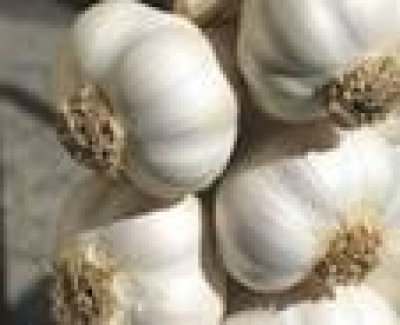Garlic (Allium sativum)
Garlic is a strongly aromatic bulb crop that has been cultivated for thousands of years. It is renowned throughout the world for its distinctive flavour as well as its health-giving properties. Garlic was domesticated long ago and is mentioned in ancient Egyptian, Greek, Indian, and Chinese writings. Today, garlic is grown in temperate and tropical regions all over the world, and many cultivars have been developed to suit different climates.
 Garlic, onions, leeks and chives are all members of the genus Allium, which comprises approximately 750 species.
Garlic, onions, leeks and chives are all members of the genus Allium, which comprises approximately 750 species.
Garlic has been used as a food and flavouring agent for thousands of years. After onion, garlic is the most widely consumed bulb. Almost 10 million tons of garlic is produced each year. The world's largest producers include China, Korea, India, USA, Spain, Egypt and Turkey.
Garlic bulbs are sold fresh or processed to produce a dry powder or oil. Garlic is popular in French, Spanish, Portuguese and South Asian cuisine. The bulb is the most commonly used part but chopped leaves are sometimes also used.
Garlic is one of the most frequently used plants in many parts of India, Pakistan and Bangladesh, and there are many ways of using it. Garlic is used not only to flavour curries but can be used in drinks and savoury deserts.
Garlic is not popular with everyone. Members of certain religious groups in India, such as Jainism and Brahman Hinduism, are forbidden to eat onion-related plants like garlic. The reasons differ in each case. Jains consider use of garlic to be too damaging to the plant, while some Hindus consider garlic too stimulating.